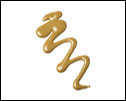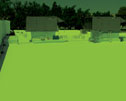Wireless transmission sites installed on roof systems come with a silent environmental, health and safety hazard: radio frequency (RF) radiation.
RF radiation-transmitting antennas are everywhere—no longer are they limited to isolated, remote towers. They are located on roof systems, sides of buildings and utility poles and are camouflaged or concealed entirely within buildings.
Many workers who are compelled to work in close proximity to RF radiation transmitters are not provided with the wireless industry's protective gear and equipment. Rather, roofing workers, electricians, maintenance personnel, HVAC technicians, painters, first-responders and numerous other trades routinely are required to work near RF radiation-transmitting antennas without a comprehensive safety system to protect them from RF radiation hazards.
Industry growth
Cell phone use has become an integral part of everyday life, and consumer demand continues to grow unabated for existing and new technologies, products and services.
The industry's growth has been astronomical. In 1998, there were 60.8 million wireless subscribers in the U.S. According to CTIA—The Wireless Association,® there are now more than 285 million subscribers, representing nearly 91 percent of the total U.S. population.
To supply consumers with its widely popular products and services, the wireless industry has expanded its wireless networks, resulting in a dramatic increase in the number of deployed wireless network components, such as base stations and antennas. In 1996, there were fewer than 23,000 wireless antenna sites in the U.S. Currently, CTIA—The Wireless Association, states there are more than 247,000 cell sites throughout the U.S., many of which host multiple wireless antennas, putting the total estimated number of commercial and governmental wireless antenna systems at more than 500,000.
Health hazards
Excessive exposure to RF radiation is hazardous to human health. For this reason, the Institute of Electrical and Electronics Engineers (IEEE) developed a widely adopted standard limiting human exposure to RF radiation.
IEEE's standard represents a consensus of scientific opinion about safe levels of exposure to RF radiation, and its scientific rationale is consistent with conclusions of numerous expert groups and health agencies throughout the world.
When considering RF radiation's possible hazards, it is important to distinguish between field levels outside the body (the exposure) and field levels or absorbed energy within body tissues (the dose). Exposure is measured in terms of the electromagnetic field strength or power density on the body. The dose depends on the exposure, as well as on a body's geometry, size, orientation with respect to the external field and other factors.
The specific absorption rate (SAR) is the dosimetric quantity that correlates best with reported biological effects of RF energy. The whole-bodyaveraged SAR is the total power absorbed by the individual subject (in watts) divided by the body mass (kilograms) and is expressed in units of W/kg.
For localized exposures to parts of the body, such as the head, a more useful measure often is the partial body exposure, which is the power absorbed per unit mass in a localized region of tissue, also expressed in W/kg.
As with exposure limits for many hazardous substances, RF safety standards in the U.S. (and most countries) have two tiers that vary in definition but correspond approximately to limits for occupational groups and the general public. In the IEEE standard, adopted by the Federal Communications Commission (FCC), the two tiers are defined as applying to exposures in controlled (occupational) and uncontrolled (general public) environments.
IEEE C95.1-1991, "Standard for Safety Levels with Respect to Human Exposure to Radio Frequency Electromagnetic Fields," was based on a comprehensive review of scientific literature, covering all reliable studies that reported biological effects of RF and microwave energy.
Based on its review, IEEE concluded science has clearly demonstrated RF radiation exposure causes "behavioral disruption" in laboratory subjects. Behavioral disruption is the inability to perform food-motivated learned behavior. The inability to perform learned tasks following RF radiation exposure proves the causal link between the exposure and behavioral, cognitive and/or psychological injuries that include depression, memory loss, mood disorders, sleep disorders, and impaired or diminished cognitive function.
Biological effects that can result from exposure to RF radiation include the heating of tissue, often referred to as "thermal" effects. This is the principle means by which microwave ovens cook food. At lower levels of exposure to RF radiation (levels lower than those that would produce significant heating), scientific evidence exists of harmful biological "nonthermal" effects. Science recognizes a causal link between the exposure and non-thermal, psychological injuries upon which the FCC RF radiation human exposure limits are based.
The danger and health and safety risk of RF radiation is, absent a thermal injury, it cannot be identified by human sensory functions such as touch, taste, smell, sound or sight. An individual may sustain a non-thermal injury and not realize he or she has been subjected to overexposure. Symptoms may not immediately present themselves. Eventual symptoms may be subtle and potentially confused with other conditions or causes. Sleep problems, mood swings, memory loss, reduced mental abilities and signs of depression are eventual symptoms of RF radiation overexposure.
Practical challenges
Tradespeople such as roofing workers routinely are exposed to excessive levels of RF radiation because no effective, comprehensive RF radiation safety system is in operation. A number of practical challenges render it impossible for wireless service providers or the wireless industry to ensure the protection of all workers. These challenges include the following:
- The impossibility or impracticality of wireless service providers having continuous knowledge and control of all activities at antenna sites
- Mandated use of "stealth" antennas that prevent workers from identifying the existence and locations of RF radiation hazards at work sites
- Mandated collocation of RF radiation-transmitting antennas that results in increased aggregate RF radiation emissions and more RF radiation hazards at a site, as well as making coordinating powering-down among multiple service providers more complex
- Locks and restricted access that may protect service providers' and property owners' physical assets from theft and vandalism but do not protect workers who are compelled to enter restricted areas to fulfill their job responsibilities
- Missing, mislabeled, unintelligible and outdated signage (particularly in an industry where mergers and acquisitions are common)
- The increasing practice of outsourcing work to third parties to cut operational costs
- A lack of training provided to third-party workers
- Pole attachments (potentially the fastest and least expensive method of expanding networks) being pursued in a world of fierce competition that does not always include careful engineering, permission to attach facilities, code-compliant construction and maintenance
- A lack of national, uniform standards for mapping and facility documentation
- Thorough, ongoing inspections and audits not being consistently and routinely undertaken
- No current solution that includes the participation of all required stakeholders (commercial service providers, property owners hosting antenna sites, employers, local governments and workers)
- Current RF radiation health and safety methodologies that lack independence, transparency and validation
This list is merely illustrative. Numerous other practical considerations exist. Let's take a closer look at a few safety measures currently in use and why they no longer meet the requirements of a viable safety solution.
Signage
No specific FCC regulations exist that impose signage requirements or prescribe the content of RF signs. However, the FCC recommends RF signs and fencing as means of controlling RF exposure areas. The Occupational Safety and Health Administration's (OSHA's) General Duty provision often is cited as requiring RF hazard signs.
We have identified a number of shortcomings with signs as an RF safety device such as the fact that they often are missing, misplaced, ambiguous, vague and outdated.
In fact, it is a common practice among wireless service providers to power down antennas to protect their employees and require them to wear protective gear and pocket protection monitors because "they have no idea how well signs on rooftops depict the actual situation and they have no control or knowledge of the rationale for their placement," according to A Practical Guide for Establishing an RF Safety Program. In other words, the wireless industry has no confidence signs provide any worker protection.
Pocket protection monitors
The purpose of RF radiation pocket protection monitors is to indicate when a wearer is being exposed to RF radiation fields that exceed the FCC's maximum permissible exposure limits for an occupational/controlled RF environment. Workers who use monitors and RF protective gear must be trained to work in RF environments to satisfy the FCC's criteria for being fully aware of the existence of RF hazards and possessing the ability to control their exposure to RF radiation.
Although pocket protection monitors can help, they have a number of limitations that preclude them from being a practical and meaningful part of a comprehensive solution for the protection of all workers (particularly third-party workers who are not considered to be RF-trained) from RF radiation overexposure.
For one thing, monitors provide warnings whenever and wherever people are already in danger from RF radiation fields. Narda Safety Test Solutions, Hauppauge, N.Y., the leading manufacturer of monitors, acknowledges in its promotional materials a monitor sends an alert when the individual wearing it is in an RF field. As a result, it is akin to a car's dashboard light that alerts its driver when the engine temperature is already too high.
Narda Safety Test Solutions also acknowledges only RF-trained technicians who work in or near occupational and/or controlled RF environments are the intended users of their monitors.
Richard Strickland, founder of RF Safety Solutions, South Setauket, N.Y., has unequivocally stated: "[P]ersonnel who use monitors should be trained RF workers. Third-party workers such as roofers, HVAC technicians, maintenance workers, painters and members of similar trades are not the proper or intended users of monitors. While it may be fairly simple to control access to a tower; it is difficult, if not impossible, to control access to an entire roof where tradesmen are compelled to work in close proximity to RF-transmitting antennas."
It is unrealistic, if not impractical, that all tradespeople will be provided monitors. Simple, low-cost detectors will pick up RF energy under limited conditions, but they are highly directional, crude and inaccurate devices. Accuracy must be demanded, especially when an individual's health and safety are at stake. More accurate devices cost $1,600 to $1,800 per device. The requisite training to use a monitor would require time, money and effort that neither a roofing worker nor his or her employer may be willing to spend.
Next steps
A new paradigm of RF safety immediately must be implemented to protect workers from harm. Because RF radiation is an invisible threat with latent bodily injury potential, education is crucial. Everyone who is at risk of RF overexposure should be taught the characteristics, hazards and exposure regulations associated with RF emissions.
Workers must be given site-specific safety plans that combine with a database and software application to establish a standardized national RF safety protocol that includes the participation of all required stakeholders. The time for complacency and neglect of this issue and the safety of workers has passed. A robust and viable RF safety program must be implemented that is characterized by independence, transparency and validation. The deployment of a meaningful loss-control tool will protect the roofing industry from the financial exposure of RF radiation claims filed on behalf of its work force.
Richard J. Burnheimer is vice president of risk and environmental, health and safety and Scott Kaisler is vice president of RF risk mitigation for RF CHECK Inc., San Diego.



